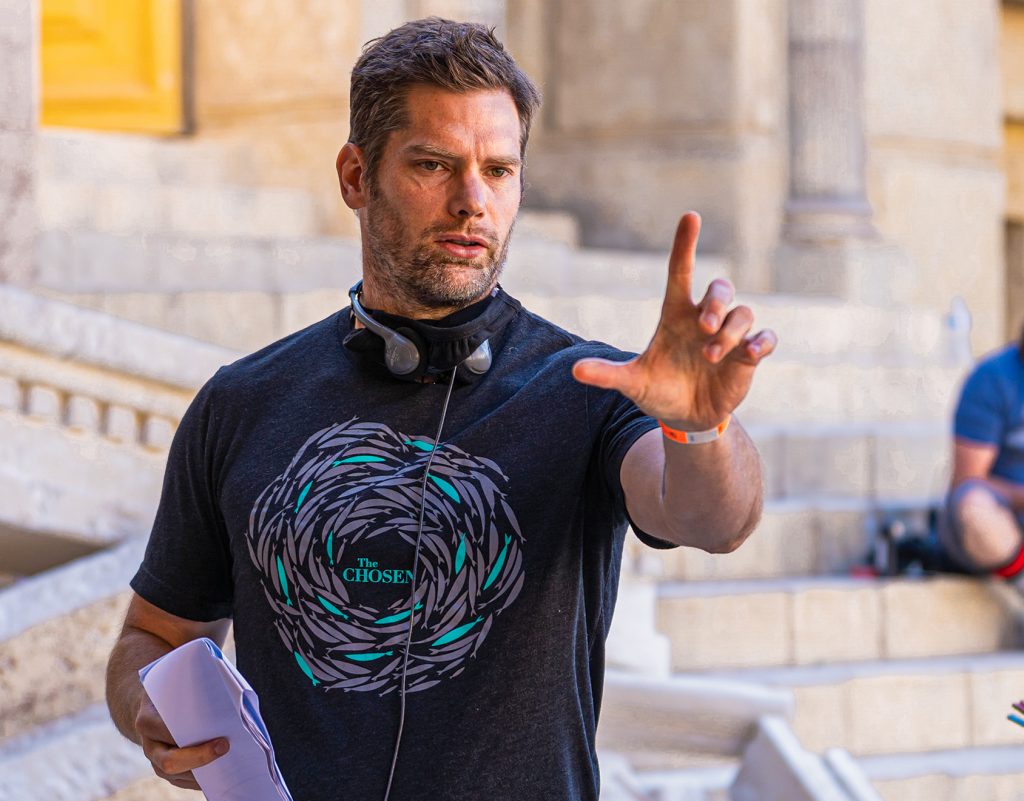“237 Reasons to Have Sex” . . . This is the title of an episode that was aired on The Oprah Winfrey Show a couple weeks ago. This particular episode attempts to take an up-close and personal look at some of the attitudes about sex in our culture.
One of the highlights of the show is the prescription of “erotica” as sex-therapy for women.
Erotica – a nice way to say “porn”?
According to Oprah.com, of the $12 billion the adult entertainment industry generates in a year, $3 billion is spent by a woman. More and more women are producing and directing adult films as well. The term used on the show is “erotica for women.” Some guests went on to talk about how filmmakers have been putting together more pornographic films that “are not denigrating to women” and present how-to instructional material. One of the guests, Dr. Gail Saltz, said that she sometimes prescribes erotic films to her sex therapy patients to help enhance arousal and help couples feel more comfortable with their bodies.
Dr. Saltz is hosts the weekly “On the Couch” segment on the Today show, where she presents sex and relationship advice. She is also the “emotional wellness expert” for iVillage.com. Dr. Saltz writes regular columns for MSNBC.com, O, The Oprah Magazine, and frequently contributes to A&E’s Biography programs.
When Dr. Saltz mentioned prescribing erotica for her patients, Oprah offered her guests an eyebrow-raised look and explained how many of her female viewers have commented about how their husbands are addicted to Internet pornography. She then asks if promoting erotica for women is a sort of double standard. Dr. Saltz replies:
“It’s not a double standard. Forty-three percent of women have some sort of sexual dysfunction—they have trouble with desire or they have trouble with arousal. And this is a tool to use if you need help feeling more desirous, feeling more aroused, or something to increase the pleasure of your sexuality, which is extremely important to women. And it can be useful to men as well. The problem is, it can be a double-edged sword in that anything really pleasurable can become kind of addictive.”
Erotica vs. Porn
Erotica is commonly used in psychiatric research. For example, The Journal of Sexual Medicine did an exploratory study called, “What Kind of Erotic Film Clips Should We Use in Female Sex Research?” The goal was to identify the types of film clips that are most appealing and arousing to women for use in future sexual function and dysfunction studies.
“Erotica” traditionally has been a term to describe sexually stimulating artwork—whether it be painting, sculpture, photography or film—that has more high-art aspirations. Those who make erotica usually try to draw a hard line between themselves and pornographers. Pornography, they say, is generally exploitive and objectifying. Erotica is thought to be high quality and realistic, artistically balancing eroticism and technique, inviting the viewer to experience and explore, not simply self-stimulate. Erotica, as opposed to porn, “depicts mutually satisfying sex between equal partners.”
This is a difficult line to draw. Much of commercial pornography thrives on its ability to convince the viewer that various sex acts are “mutually satisfying” to the characters on screen. Films where women are repeatedly harassed, objectified, and abused often portray the message that women are turned on by these things. Where is the line drawn between erotica and pornography?
Questions about “Prescribing” Porn
For the sake of discussion, let’s give these definitions the benefit of the doubt. Let’s say erotica doesn’t come with some of the unwanted trappings of your standard commercial pornography. Let’s say that there isn’t an exploitive or objectifying element to erotica (whatever that means). For the sake of discussion let’s assume the position of a psychiatrist who, like Dr. Saltz, is “prescribing” erotica to female sex therapy patients.
The first question any good doctor needs to ask is whether their medicine is bringing relief or merely masking the cause of the problem. If a patient comes to a doctor with a headache, the treatment of the problem will depend on the cause of the ache. Was it caused by some form of trauma? We prescribe powerful drugs to deal with pain. We run X-rays to check nature and extent of damage. Is the pain caused by poor lifestyle choices—a poor diet, lack of exercise or dehydration? Then perhaps drugs are not the best answer: a prescription of different lifestyle choices (to deal with the root of the problem) may be most appropriate.
I would ask the same question about “prescribing” erotica: is it a drug that is helping the problem, or merely masking it? If women cannot become “aroused” or feel “desire” in their sex lives, will erotica bring lasting relief, or will it temporarily mask a more severe problem that should be addressed by a different treatment?
The second question any good doctor needs to ask is whether the prescription is likely to cause greater problems. Chemo treatments are harmful to the body, but they can eradicate cancer cells. Certain prescription drugs can become addictive, but they can also bring relief from painful conditions. Each doctor has the responsibility to weigh the negative and positive consequences of prescribed drugs for each patient, including the counter effects and potential side-effects of its use.
I would ask the same question about erotica: if I “prescribe” erotica for this particular person, will it cause greater problems? Even if a woman begins feeling greater “desire” in her sexual relations, will continued use of erotica cause greater problems, such as an addiction or a harmful view of sexuality?
Erotica: Compromising in a Porn Culture
Sociologist Michael Kimmel has found that each year more of his female college students approve of porn. He believes this reflects a growing notion that embracing pornography is sexually empowering for women. Nevertheless, he also says, “their attitude is surprising to those of us who think it an impoverished view of liberation to construct your sex life the way men do.”
Psychiatry and common experience demonstrate that men and women approach sex differently. Until recently, pornography has been a chiefly male phenomenon. But with more talk about female sexual liberation, erotica can market itself as a more “feminized” or “balanced” pornographic art.
Even if more women are being “turned on” by erotica, is this really healthy in the long run? My concerns are the same as Kimmel’s: isn’t a woman’s use of erotica an attempt to conform her sexuality to male expectations?
I believe the chief cause of our lack of arousal and desire is not solved by watching erotic films or learning better sexual techniques. When we get to the core of our sexual dysfunctions, it is because deep down we have chosen to pursue sexual pleasure, not sexual intimacy. To quote Tim Alan Gardner, the big ‘O’ of sex is not “orgasm,” it is “oneness.” When two lovers choose to pursue oneness in the whole of their marriage, including the bedroom, then pleasure is a great byproduct. But instead, when we begin buying into the idea that good sex means the achievement of greater arousal, we put the cart before the horse.
Unfortunately in our sexuality-on-tap culture, this is an easy thing to buy into. How many women don’t feel greater arousal because they believe they aren’t sexy enough or they don’t have the right body type to truly allure a man? How many men experience an emotional and sexual impotence because they have grown up on pornography and have trained their bodies to respond to pixels and silicone instead of intimacy with another human heart? How many women turn to erotica and receive a rush of desire and arousal but are risking their own addiction? How many women begin to use erotica and through it continue to buy into the lie that arousal is the purpose of sex?
Please understand: I know I cannot lump all sexual dysfunctions together and pretend that my philosophy offers an easy solution or a quick fix. There are no easy solutions. But using erotica is like trying to use inadequate, threadbare patchwork to cover the holes in one’s fractured sexuality.







I agree with your response, in fact there was an article published in 1979 by Christian Century titled “Keeping Quality in Sexual Experience,” written by the deceased Dr. Peter Bertocci, in which he challenges the libertine sexual ethic that has pervaded today’s culture. To some degree his article still bears relevance. You can find his article on religion online website as well as Authentic Sexuality written by Jack and Judith Balswick
There are a few comments above stating what a ‘good’ doctor would or would not do. Based on what? I checked to see if the author was a doctor, and he isn’t… I think that if/when you make an argument you have to back up your position better – otherwise you do more harm.
@Lyle – You are right. If you look further on this blog you will find more information from medical doctors and psychologists that speaks more to the subjects in this post, such as the potential harm of porn addiction. For instance, I interviewed Dr. Samir Parikh, the Chief of the Department of Mental Health and Behavioral Sciences at Max Healthcare. Or you might like my Q&A with Dr. Kevin Skinner, author of Treating Pornography Addiction.
As for what I said a “good” doctor would do, I mentioned two key points: (1) A good doctor needs to ask whether their medicine is bringing relief or merely masking the cause of the problem, and (2) a good doctor needs to ask whether the prescription is likely to cause greater problems. I take these as fairly common sense ideas, but I’m willing to be proven wrong. I believe any doctor would likely agree with these concepts. Where a doctor might disagree with me is on my beliefs about the harm erotica can cause someone.